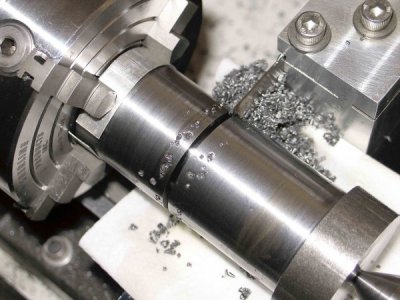- Joined
- Jun 4, 2019
- Messages
- 91
There are numerous videos on tricks for using parting tools but I found one that seems too simple and obvious not to be used universally.
His graphic makes it seem very simple but I don't quite see how it is not dependent upon the position above or below center.
I tried it on a piece of PVC in my mini and it works as advertised. To me, the most obvious advantage is the way it pushes the chips out the bottom.
Doing it the normal way, I have to stop frequently to remove the tangled mess of chip, including using a scissors to cut it loose.
I am interested in some opinions of this....
js
His graphic makes it seem very simple but I don't quite see how it is not dependent upon the position above or below center.
I tried it on a piece of PVC in my mini and it works as advertised. To me, the most obvious advantage is the way it pushes the chips out the bottom.
Doing it the normal way, I have to stop frequently to remove the tangled mess of chip, including using a scissors to cut it loose.
I am interested in some opinions of this....
js


